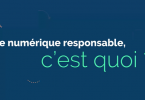Un article publié par une équipe de chercheurs de l’Université d’Édimbourg présente les résultats d’une étude où les flux d’information, en lien avec les interventions et les rôles joués par des enseignants facilitateurs et des apprenants dans un cMOOC (MOOC connectiviste), sont représentés et analysés graphiquement. Rappelons que le design même de ce type de MOOC favorise l’exploration libre des intérêts de tous et chacun. L’analyse fait ressortir que c’est surtout l’intérêt pour les thématiques soulevées par les apprenants et partagées par l’entremise de mots-clics (“hashtags”) dans leurs échanges sur Twitter qui nourrit le cours des échanges. Les contributions des facilitateurs ont donc eu un impact réduit sur les directions qu’ont prises les activités proposées:
Our study also shows that top ten nodes with the highest in-degree were primarily hashtags. This suggests that people were connecting around thematic markers of common interest, referring to them and making them popular. In fact, thematic analysis of the same dataset (Joksimović, Kovanović, et al., 2015) confirms that the learners were more focused on the topics of interest, rather than those suggested by course facilitators, and that those topics emerged quickly in the course, and were maintained by the groups of people that adopted them.
Les auteurs de l’article enchaînent en soulignant l’émergence de communautés de pratique et d’intérêt autour de ces thématiques, où les facilitateurs ont vu leur fonction d’enseignement prendre un rôle de second plan, davantage axé sur la participation comme guide:
The study findings suggest that both human and technological actors subsumed the teaching functions, and exerted influence over the network. It appears that with time, several interest-based sub-communities emerged. By visualizing the structure of these emerging sub-networks from week-to-week, we observed that some of the influential nodes were instrumental to the formation of these sub-networks.
Ce type d’analyse pourrait servir de modèle pour animer un cMOOC et prévoir certains mécanismes aidant à moduler les interventions des facilitateurs, de façon à maximiser leur participation et l’impact des apprentissages chez les apprenants.
Source:
Oleksandra Skrypnyk, Srećko Joksimović, Vitomir Kovanović, Dragan Gaševic, and Shane Dawson. Roles of Course Facilitators, Learners, and Technology in the Flow of Information of a CMOOC. International review of research in open and distributed learning, Vol 16, No 3 (juin 2015).






